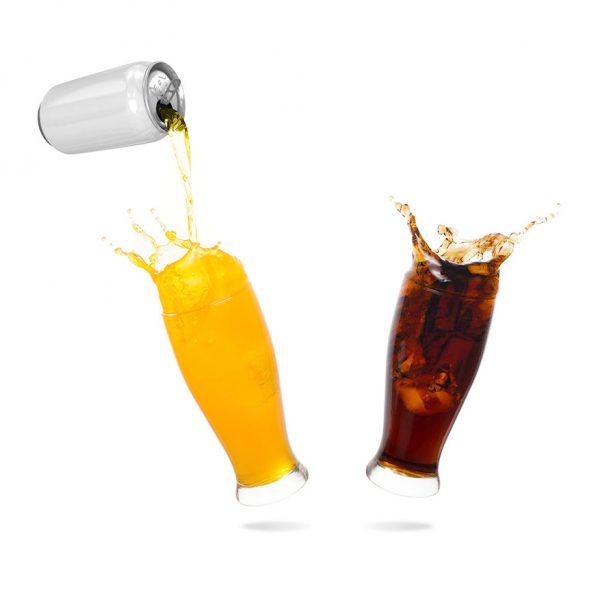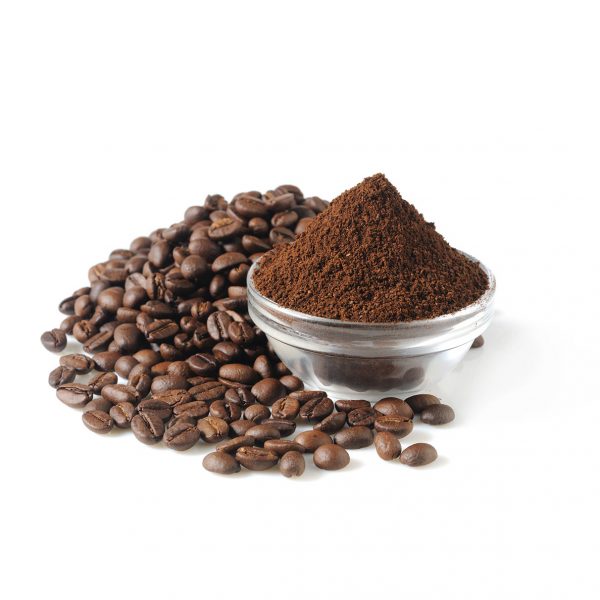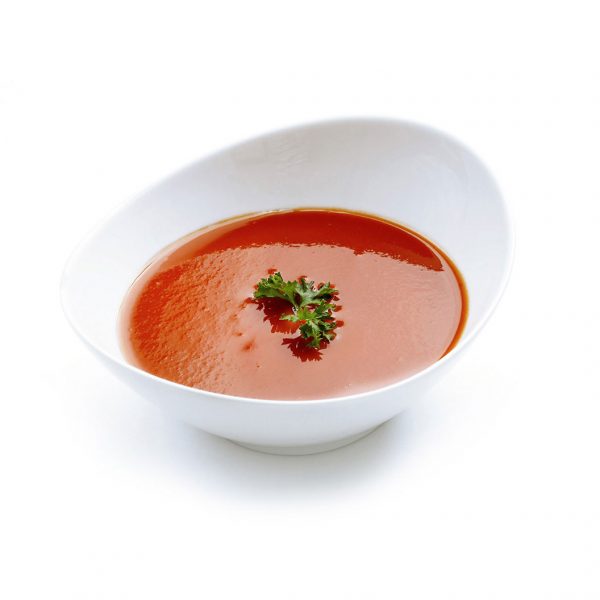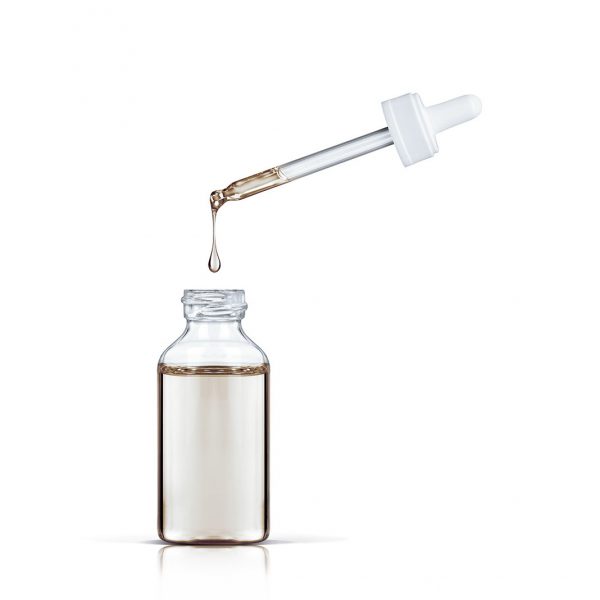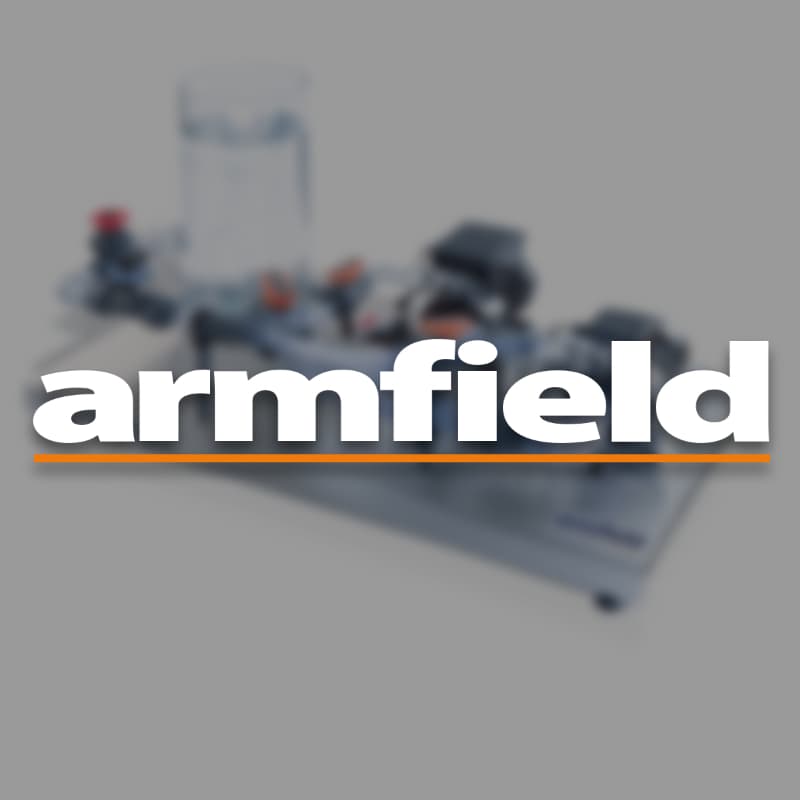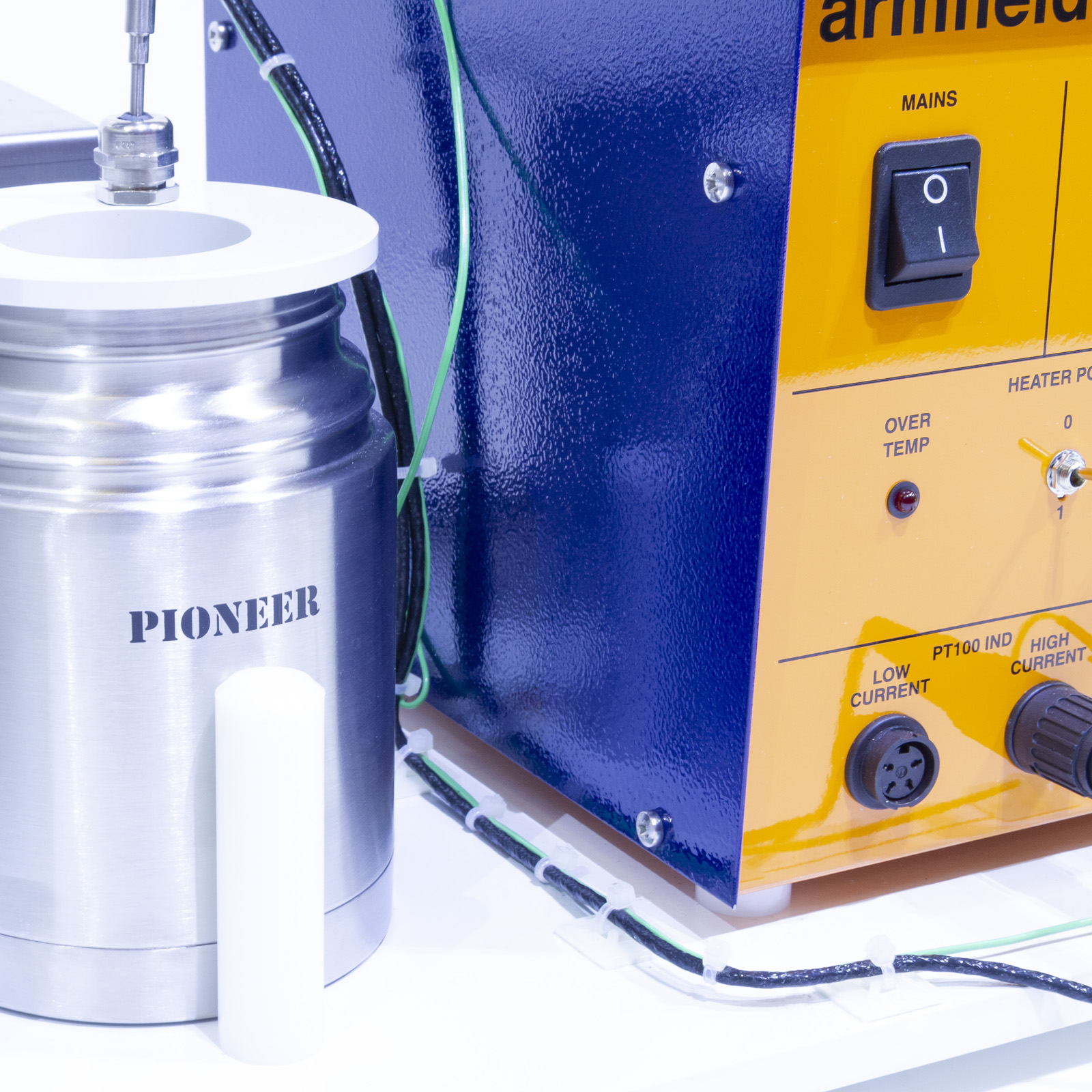TH1 – Temperature Measurement and Calibration
The Armfield Temperature Measurement And Calibration Unit is designed to introduce students to temperature and how different techniques can be employed to measure this variable.
Description
A bench top unit designed to introduce students to temperature, temperature scales and commonly available devices to measure temperature.
The equipment comprises a hypsometer/hot water bath and ice flask to generate accurate fixed points (the condensation point and triple point of water) and variable temperatures.
Temperature sensors with different thermometric principles and characteristics are supplied. An accurate platinum resistance thermometer (PT100) with five point NAMAS calibration certificate and temperature indicated directly in °C, is included for reference.
The temperature of the condensing water vapour in the hypsometer can be determined accurately using the software or tables in the manual, providing knowledge of the barometric pressure is known. The water level is simply raised to change the hypsometer into a variable temperature water bath.
The unit is designed for safe operation with insulation surrounding the vessel and a protected steam vent. A radiation shield surrounds the sensors to be calibrated to minimise measurement errors. A common carrier enables all sensors to be transferred simultaneously from ice flask to the hypsometer/water bath.
All thermometric properties and temperatures measured are displayed on a digital meter with selector switch.
All important electronic sensors used on the unit provide outputs for data logging and analysis. The data logger, provided with the unit, interfaces between the unit and the user’s computer using a USB port.
The optional educational software package enables data recording, graph plotting and provides full instructions for setting up equipment and performing the experiments.
All related theory and help texts are provided. The software requires a computer (not supplied) running Windows 7 or later with a USB port.
The following sensors/signal conditioning circuits are included:
- Accurate reference PRT with linearised output in °C
- Industrial PRT with a bridge circuit to measure the resistance in Ohms. Higher current can be passed through the sensor to show the effect of self-heating
- Type-K thermocouple using a precision preamplifier to measure the thermoelectric voltage with cold junction compensation or a second thermocouple in ice as required
- Additional thermocouples enable errors due to response and conduction to be demonstrated. An additional conditioning circuit with user adjustable zero and span controls enables the output to be displayed as a direct reading thermometer calibrated in °C
- Thermistor with constant current through the sensor to measure the resistance in Ohms
- In addition to the thermoelectric sensors a liquid in glass and vapour pressure thermometer are also supplied
Technical Specifications
Features & Benefits
Key Features
- Thermometric properties (physical changes due to temperature) of different sensors are investigated
- Condensing vapour (using a hypsometer) provides an accurate fixed point for calibration
- Stirred hot water bath provides variable temperatures
- Reference Platinum Resistance Thermometer (PRT) with NAMAS calibration supplied
- All electrical sensors can be logged using a PC (not supplied). Optional teaching software is available for data logging
- Investigate the thermoelectric properties of a platinum resistance device
- Examine the thermoelectric properties of a thermocouple
- Explore the thermoelectric properties of a thermistor
- Investigate the effect of temperature on a liquid-in-glass device. To investigate the effect of temperature on a bi-metal thermometer
- Check the changes in the properties (sensor output) of a range of temperature-sensitive devices, using a heated water-bath
- Investigate the response of temperature-sensing devices to sudden changes in temperature
- Determine the time taken for a range of temperature sensors to reach a stable reading after a step change in temperature
- Investigate the conversion of sensor outputs into engineering units
- Establish accurate fixed points for the calibration of temperature sensors
- Investigate the use of the ice point and the boiling point of water as reference points for temperature measurement
- Utilise accurate fixed reference-points in the calibration of a thermocouple
- Introduce zero shift in the calibration of a thermocouple
- Study the temperature scales in common use, and define the difference between relative and absolute temperature scales
- Investigate the reference PRT equation and the use of correction equations
- Investigate the change in temperature resulting from the addition of a sensor to the system
- Utilise a heated water-bath and an enclosed body of air in order to investigate the effect of a temperature differential between temperature sensors and the body being measured
- Examine the effects of conduction and self-heating in a temperature-sensing device
- Make use of a variable-temperature water-bath to set up temperature gradients in a variety of sensors having different sheathing and surroundings
- Apply low and high electrical currents to a platinum resistance thermometer
- Investigate one source of error in the calibration of a temperature sensor
- Project Work
TH-DTA-ALITE:
Educational software for TH1-TH5 on a USB key complete with data logger (a PC running Windows 7 or later, with a USB port is required)
- A bench top unit comprising a hypsometer/hot water bath and ice flask, which generate accurate fixed points and variable temperatures. An accurate platinum resistance thermometer (PT100) with five point NAMAS calibration certificate and temperature indicated directly in ˚C is included for reference
- Other temperature sensors include:
- Platinum resistance sensor, K-type thermocouple, thermistor, bimetallic and liquid in glass thermometers
- Used to investigate thermostatic properties and characteristics of temperature measurement devices
- The hypsometer uses condensing water to generate an accurate calibration point. It is heated by a pair of 1kW electric heating elements with variable power control and overtemperature protection
- The electrical console houses all the necessary electronics with appropriate protection devices and an RCD. A digital meter with selector switch displays all thermometric properties and temperatures measured. Corresponding signals are routed to an I/O port for connection to a PC using the Windows™ operating system, via an interface device provided with the optional software
- An optional interface device and educational software package is available
- A comprehensive instruction manual with a range of fully detailed laboratory teaching exercises is included
Electrical supply: Single phase
- TH1-A: 220-240V/1ph/50Hz, 10A
- TH1-B: 120V/1ph/60Hz, 20A
- TH1-G: 220-240V/1ph/60Hz, 10A
Fill with distilled/deionised water:
- Hypsometer: 1 litre
- Water bath: 4 litres
Source of ice shavings made from pure water
Recommended instruments
- Barometer: to determine absolute pressure
- Stop clock: w hen not using the optional interface device/educational software
- DC calibrator/thermocouple simulator: to demonstrate calibration of instrumentation
- Resistance box/PRT simulator: to demonstrate calibration of instrumentation/lead errors
PACKED AND CRATED SHIPPING SPECIFICATIONS
Volume: 0.2m³
Gross Weight: 15Kg
Length: 0.70m
Width: 0.325m
Height: 0.68m
- TH1-A
- TH1-B
- TH1-G
